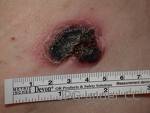Non-Hodgkin Lymphoma cancer facts
Overview
The non-Hodgkin Lymphoma is one of the most potent and fatal diseases at present. There are a lot of things that people should know and understand about this disease. And this article will provide you about the facts, details, causes, symptoms and the possible treatments of this disease.
Before going directly into the matter, it is very important for everyone to understand the term lymphoma. Lymphoma refers to the malignant growth of cells from the lymph nodes or the lymphocytes, the primary immune system of the human body. However, the cancers associated with the lymphocytes are basically of two types and they are the Non-Hodgkin Lymphoma and the Hodgkin Lymphoma. The difference between both these diseases is quite complex as these two diseases are classified based on the aggressiveness of the cancer and the areas of occurrence.
Types
There are many types of non-Hodgkin Lymphoma and each classification is dealt separately and it will help in the better understanding of this disease. The major classifications are listed below.
- B-Cell Lymphoma
- T-Cell Lymphoma
However these two types are further classified into various types and they are explained below.
B-Cell Lymphoma classifications :
- Diffuse Large B-Cell lymphoma – This is the most common yet fatal form of Non-Hodgkin’s Lymphoma across the globe and accounts for nearly 85% of the total cases of lymphoma. This type of disease is characterized by the quick growth of the lymph nodes alone and then spreading in an intense and rapid manner to the nearby epithelial tissues and cells. This disease normally affects the older people who are above sixty.
- Follicular Lymphoma – This is another type of B-Cell lymphoma which is common among the older people. This is exactly opposite to the DLBCL as it is very slow in spreading, but the cure for this disease is nearly impossible.
- Primary CNS lymphoma – The central nervous system lymphoma is another severe condition where the lymph nodes of the brain cells are affected. This is a very disturbing disease as the survival rates are very low and the patients are bound to suffer from conditions like mental illness, poor vision, paralysis of facial muscles etc. People can survive merely for five years with the treatments.
- Burkitt Lymphoma – This type of lymphoma is found mostly in the African continent and this is a rapid growing disease. Males are the mostly affected. This disease can be cured easily with proper treatments and chemotherapy unlike the previous three cases.
There are many other forms of B-Cell Lymphoma which are not as frequently occurring as the first three diseases. Chronic Lymphocytic leukemia, small lymphocytic leukemia, Mantle cell lymphoma, Marginal zone B-Cell Lymphomas, Nodal and Extranodal Marginal zone B-cell lymphomas, Primary mediastinal B-cell lymphoma, Splenic marginal zone B-cell lymphoma and finally Hairy cell lymphoma.
The T-Cell Lymphoma classifications:
- Precursor T-Lymphoblastic lymphoma – This disease starts off from the thymus gland and forms into a cluster of dense malignant cells which are deadly. This disease affects mostly the younger generation.
- Peripheral T-Cell Lymphomas – This is a pretty rare disease and depends on the condition of the T-cells.
Treatment
Treatment for the NHL depends on the condition that the patient is suffering from i.e. either the B-Cell lymphoma or the T-cell lymphoma. However, on a generalized term the treatments normally involve bone marrow transplants, Chemotherapy (especially the CHOP chemotherapy), use of antibodies such as Rituxan, Ocrelizumab, etc.
Radiotherapy is also one of the possible treatments for Non-Hodgkin Lymphoma.
EPOCH is another treatment method for NHL which falls under the chemotherapy category. This method of chemotherapy seems to be much effective than the CHOP chemotherapy with better results. However, this is not practiced on a large scale at present.


